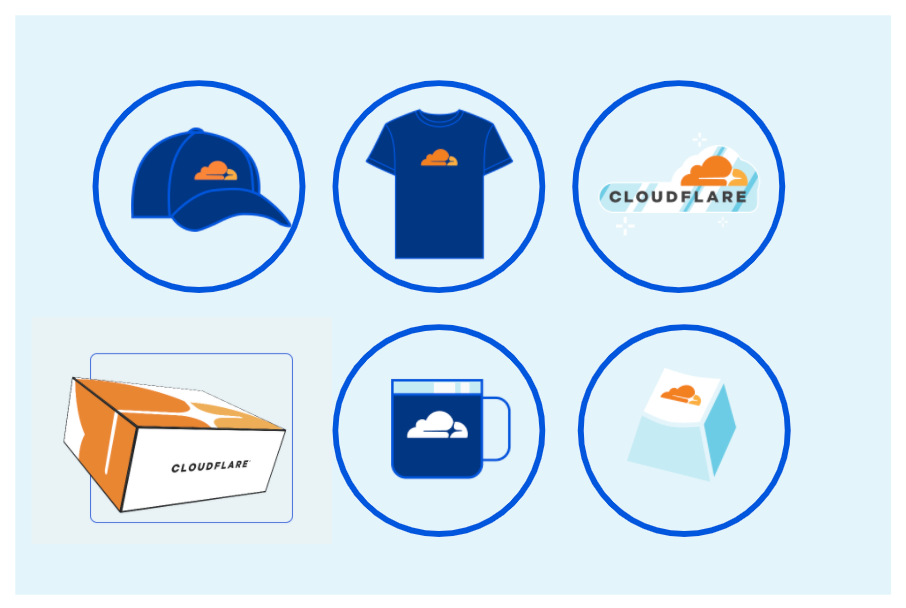Introducing Shadow IT Discovery


Your team likely uses more SaaS applications than you realize. The time your administrators spend vetting and approving applications sanctioned for use can suddenly be wasted when users sign up for alternative services and store data in new places. Starting today, you can use Cloudflare for Teams to detect and block unapproved SaaS applications with just two clicks.
Increasing Shadow IT usage
SaaS applications save time and budget for IT departments. Instead of paying for servers to host tools — and having staff ready to monitor, upgrade, and troubleshoot those tools — organizations can sign up for a SaaS equivalent with just a credit card and never worry about hosting or maintenance again.
That same convenience causes a data control problem. Those SaaS applications sit outside any environment that you control; the same reason they are easy for your team is also a potential liability now that your sensitive data is kept by third parties. Most organizations keep this in check through careful audits of the SaaS applications being used. Depending on industry and regulatory impact, IT departments evaluate, approve, and catalog the applications they use.
However, users can intentionally or accidentally bypass those approvals. For example, if your organization Continue reading
MUST Read: Operational Security Considerations for IPv6 Networks (RFC 9099)
After almost a decade of bickering and haggling (trust me, I got my scars to prove how the consensus building works), the authors of Operational Security Considerations for IPv6 Networks (many of them dear old friends I haven’t seen for way too long) finally managed to turn a brilliant document into an Informational RFC.
Regardless of whether you already implemented IPv6 in your network or believe it will never be production-ready (alongside other crazy stuff like vaccines) I’d consider this RFC a mandatory reading.
MUST Read: Operational Security Considerations for IPv6 Networks (RFC 9099)
After almost a decade of bickering and haggling (trust me, I got my scars to prove how the consensus building works), the authors of Operational Security Considerations for IPv6 Networks (many of them dear old friends I haven’t seen for way too long) finally managed to turn a brilliant document into an Informational RFC.
Regardless of whether you already implemented IPv6 in your network or believe it will never be production-ready (alongside other crazy stuff like vaccines) I’d consider this RFC a mandatory reading.
Crystal Notes: Importing Code
In Crystal, code is imported with the require statement. Considerations The compiler combines all required files together. A file can be required more than once, but only the first require statement has any effect. The standard library on Linux is located in the ...continue reading
Infrastructure 2. Building Multi Server Cloud with Proxmox (Debian Linux) and Local Storage
Hello my friend,
In the previous blogpost we covered the installation of Proxmox as a core platform for building open source virtualisation environment. Today we’ll continue this discussion and will show how to create a multi server cloud in order to better spread the load and provide resiliency for your applications.
2
3
4
5
retrieval system, or transmitted in any form or by any
means, electronic, mechanical or photocopying, recording,
or otherwise, for commercial purposes without the
prior permission of the author.
How to Automate Infrastructure?
In many cases, Linux is a major driving power behind modern clouds. In fact, if you look across all current big clouds, such as Amazon Web Services, Google Cloud Platform, Microsoft Azure, you will see Linux everywhere: on servers and on network devices (e.g., data centre switches). Therefore, knowledge how to deal with Linux and how to automate it is crucial to be successful in automation current IT systems.
At our trainings, advanced network automation and automation with Nornir (2nd step after advanced network automation), we give you detailed knowledge of all the technologies relevant:
- Data encoding (free-text, XML, Continue reading
Lenovo P14s Red Blue Green White Black Flashing Screen
Today, my beloved Lenovo P14s Gen 1 had a "computer says noooooo" moment. Since purchasing this machine 6 months ago, it has been rock solid. Then, out of the blue it hits me with a rotating carousel of full screen colours: red, blue, green, white and black. OMG! This is my work...continue reading
Juniper EX 15.X Password Reset
Recently, I was trying to reset the root password on an EX2200. Following the normal process of entering single user mode did not work. In this post I will cover the workaround to reset the root password. The Issue On an EX2200/3200/3300/4200/4500/4550 running code version 15.1R1 -...continue reading
Industry Insights with Anthos
Myself and my colleague Reju Pillai did a webinar on Anthos and how it can solve industry challenges in the hybrid and multi cloud area. This webinar was done in close collaboration with Google cloud marketing team. We covered the relevance of Anthos and application modernisation to industries in Retail, Digital Natives, Banking and Manufacturing … Continue reading Industry Insights with AnthosGeorgia Prepares to Launch a New Internet Exchange Point

A new Internet exchange point will launch in Georgia in September. We look at the motivations for developing the IXP and plans for the future.
The post Georgia Prepares to Launch a New Internet Exchange Point appeared first on Internet Society.
Member News: Israel Chapter Pushes for Better Internet Access

More broadband, please: The Internet Society’s Israel Chapter has reached out to the Israeli government about a number of issues affecting the country’s broadband service. Commenting on a plan by telecom provider Bezeq to roll out fiber broadband to 80 percent of households in the country within six years, it said the Ministry of Communications should […]
The post Member News: Israel Chapter Pushes for Better Internet Access appeared first on Internet Society.
Heavy Networking 593: Network Observability With VMware vRealize Network Insight (Sponsored)
On today’s Heavy Networking, we drill into VMware’s vRealize Network Insight (vRNI) to learn how it provides end-to-end monitoring, how it uses flow records and other data sources, and its architecture. We’ll also discuss modeling/digital twin capabilities, and applying vRNI to security, troubleshooting, and other use cases. VMware is our sponsor.
The post Heavy Networking 593: Network Observability With VMware vRealize Network Insight (Sponsored) appeared first on Packet Pushers.
Heavy Networking 593: Network Observability With VMware vRealize Network Insight (Sponsored)
On today’s Heavy Networking, we drill into VMware’s vRealize Network Insight (vRNI) to learn how it provides end-to-end monitoring, how it uses flow records and other data sources, and its architecture. We’ll also discuss modeling/digital twin capabilities, and applying vRNI to security, troubleshooting, and other use cases. VMware is our sponsor.Slow and Steady and Complete

I was saddened to learn last week that one of my former coworkers passed away unexpectedly. Duane Mersman started at the same time I did at United Systems and we both spent most of our time in the engineering area working on projects. We worked together on so many things that I honestly couldn’t keep count of them if I tried. He’s going to be missed by so many people.
A Hare’s Breadth
Duane was, in many ways, my polar opposite at work. I was the hard-charging young buck that wanted to learn everything there was to know about stuff in about a week and just get my hands dirty trying to break it and learn from my mistakes. If you needed someone to install a phone system next week with zero formal training or learn how iSCSI was supposed to operate based on notes sketched on the back of a cocktail napkin I was your nerd. That meant we could often get things running quickly. It also meant I spent a lot of time trying to figure out why things weren’t working. I left quite a few forehead-shaped dents in data center walls.
Duane was not any of those Continue reading
Future-proofing Networks with the Right Cloud Investments
Implementing and maintaining a secure, accessible cloud that can scale at an affordable rate is essential for a successful digital transformation strategy and future-proofing the network.Cloudflare Developer Summer Challenge


There are a lot of experiences we have all grown to miss over the last year and a half. After hearing from our community, two of the top experiences they miss are collaborating with peers, and getting Cloudflare swag. Perhaps even in the reverse order! In-person events like conferences were once a key channel to satisfy both these interests, however today’s remote world makes that much harder. But does it have to?
Today, we are excited to introduce the Cloudflare Developer Summer Challenge. We will be rewarding 300 participants with boxes of our most popular swag, while enabling collaboration with other participants through our Workers Discord channel.
To participate, you have to build a project that uses Cloudflare Workers and at least one other product in our rapidly expanding developer platform. We will judge submissions and award swag boxes to those with the most innovative projects, limited to one box per person. The Challenge will be open for submissions between today, and closing November 1, 2021. See a full list of terms and conditions here.

What are the details?
Cloudflare’s developer platform offers all the building blocks to create end-to-end applications with products across compute, storage, and frontend services. To Continue reading
Building the Cloudflare Summer Challenge Application


If you haven’t already heard, we’re hosting the Cloudflare Summer Developer Challenge, a contest for the Cloudflare community at large. Anybody – yes, including you – can sign up for free and compete for a chance to win one of 300 available prizes. To submit you need to use at least two products from the Cloudflare developer platform — which makes this contest a great opportunity to give them a try if you haven’t already! The top 300 submissions will receive a box of our most popular swag, so you should give it a go!
Coincidentally, the Cloudflare Summer Developer Challenge’s landing page and signup workflow qualifies as a valid project submission (so meta), so if you’re looking for some inspiration, this walkthrough will shed some light on how it was built.
Overview
At its core, the application is a series of static HTML pages, most of which have a form to submit, with a backend API to handle those submissions, and a storage layer to persist the data. In a Cloudflare lens, this would point towards using Pages, a Worker, and Workers KV. And while this should be the preferred stack for a project like this, truthfully, this Continue reading